- November Gardening: How to Protect Your Plants for Winter
- 1. Mulch
- 2. Wrap or Cover Plants
- 3. Watering
- 4. Trim and Prune
- 5. Protect Potted Plants
- 6. Create Windbreaks
- 7. Monitor Weather Conditions
- Preparing Your Garden for Winter: Essential Tips for November
- 1. Clean Up Your Garden
- 2. Prune Trees and Shrubs
- 3. Protect Tender Plants
- 4. Mulch Your Flower Beds
- 5. Check and Repair Garden Structures
- 6. Maintain Proper Drainage
- 7. Protect Container Plants
- 8. Store Garden Equipment
- 9. Plan for Spring
- Winterizing Your Shrubbery and Trees: Best Practices for November
- 1. Pruning
- 2. Mulching
- 3. Wrapping
- 4. Watering
- 5. Pest Control
- 6. Snow and Ice Management
- 7. Protecting against Wildlife
- 8. Monitoring and Maintenance
- Mulching Techniques for Winter: Ensuring Cold-Weather Protection for Your Plants
- 1. Choose the Right Mulch
- 2. Apply a Thick Layer
- 3. Extend the Mulch Beyond the Plant’s Drip Line
- 4. Remove Weeds and Grass Before Mulching
- 5. Avoid Mulching Too Early or Too Late
- 6. Don’t Pile Mulch Directly against Plant Stems
- 7. Monitor Moisture Levels
- 8. Adjust Mulch Depth in Spring
- Pruning in November: Maximizing Health and Growth for Your Bushes and Trees
- Why prune in November?
- Benefits of pruning in November
- Pruning techniques for November
- Pruning tools and maintenance
- Protecting Your Trees from Winter Pests: Effective Strategies for November
- Inspect for pests
- Remove affected branches
- Apply dormant oil spray
- Mulch around the base
- Monitor for signs of damage
- Consider professional help
- Watering Your Plants in November: Finding the Right Balance Before Winter
- 1. Monitor Soil Moisture
- 2. Water Deeply
- 3. Adjust for Temperature and Rainfall
- 4. Mulch to Retain Moisture
- 5. Be Cautious with Container Plants
- 6. Reduce Frequency as Winter Approaches
- Winter Care for Fruit Trees: Ensuring a Bountiful Harvest Next Year
- 1. Pruning
- 2. Mulching
- 3. Watering
- 4. Pest and Disease Control
- 5. Protection from Cold and Frost
- 6. Monitoring
- Monitoring Your Plants for Winter Damage: Identifying and Addressing Issues in November
- 1. Inspect for Frost Damage
- 2. Look for Wind Damage
- 3. Check for Snow and Ice Damage
- 4. Monitor for Pest Infestations
- 5. Provide Adequate Watering
- 6. Protect Plants from Extreme Temperatures
- 7. Consult with a Professional
- Question-answer:
- What steps should I take to ensure successful wintering for my bushes and trees?
- When is the best time to water my bushes and trees before winter?
- What types of mulch should I use around my bushes and trees?
- Should I prune my bushes and trees before winter?
- What are some signs of winter damage on bushes and trees?
- How can I protect sensitive plants from winter winds?
- Is it necessary to fertilize my bushes and trees in November?
- Video: 9 Types of Crops To Plant In November | Winter Gardening Guide
As the cold weather approaches, it’s important to take the necessary steps to ensure your bushes and trees are prepared for winter. Properly winterizing your plants can help protect them from freezing temperatures, harsh winds, and winter pests. In this article, we will discuss some essential tips and techniques for successful wintering of your bushes and trees in November.
1. Wrap your trees and shrubs: One of the most effective ways to protect your plants from winter damage is to wrap them in burlap or frost protection fabric. This helps to insulate the plants and shield them from the harsh elements. Be sure to wrap the entire plant, including the branches and foliage, and secure the wrapping tightly.
2. Mulch around the base: Applying a layer of mulch around the base of your bushes and trees can help to regulate soil temperature and moisture levels. This is especially important in colder climates where the ground can freeze. Mulch also acts as a protective barrier against winter pests and diseases. Use organic mulch such as wood chips or straw and apply a layer several inches thick.
3. Prune and trim: November is a great time to prune your bushes and trees before they go dormant for the winter. Removing dead or diseased branches can prevent the spread of disease and improve the overall health of the plant. Be sure to use sharp pruning shears and make clean cuts at a 45-degree angle. Avoid pruning too close to the trunk as this can damage the tree.
4. Water adequately: Although plants may not require as much water in the winter, it’s still important to ensure they receive adequate hydration before the ground freezes. Water deeply and thoroughly, making sure to saturate the root zone. This will help plants withstand the harsh winter conditions and prevent dehydration.
5. Protect from frost: Frost can damage and kill delicate plants, so it’s important to take precautions. Cover your plants with a frost cloth or old bedsheet on frosty nights to provide extra insulation. Remove the cover during the day to allow sunlight and air circulation.
By following these tips, you can ensure the successful wintering of your bushes and trees. Taking the time to properly prepare and protect your plants will not only help them survive the winter, but also thrive in the coming spring.
November Gardening: How to Protect Your Plants for Winter
As winter approaches, it’s important to take steps to protect your plants and ensure their survival during the colder months. Here are some tips on how to protect your plants for winter:
1. Mulch
Mulching is an effective way to insulate your plants and protect them from the cold. Apply a layer of mulch around the base of your plants to help retain moisture and regulate soil temperature. Use materials such as straw, wood chips, or leaves to create a protective barrier.
2. Wrap or Cover Plants
For delicate plants that are susceptible to freezing temperatures, consider wrapping them in burlap or covering them with frost blankets. This provides an extra layer of insulation and helps prevent frost damage.
3. Watering
Proper watering is crucial during winter. While it may be tempting to reduce watering, it’s important to ensure that your plants receive adequate moisture. Water deeply before the ground freezes to provide some moisture throughout the winter.
4. Trim and Prune
Trimming and pruning your plants can help remove diseased or damaged branches and promote better airflow. This can prevent the spread of diseases and minimize the risk of damage caused by heavy snow or ice accumulation.
5. Protect Potted Plants
If you have potted plants that are sensitive to freezing temperatures, consider moving them indoors or to a sheltered area, such as a garage or shed. If moving them is not an option, wrap the pots with insulation or use a frost cloth to protect the plants.
6. Create Windbreaks
Strong winter winds can be damaging to plants. Consider creating windbreaks using materials such as burlap or fencing to shield your plants from cold gusts. This can help reduce the risk of desiccation and damage.
7. Monitor Weather Conditions
Stay informed about weather conditions and be prepared to take extra precautions if extreme cold is expected. Be ready to cover your plants with blankets or move them to a more protected location if necessary.
By following these tips, you can help protect your plants and ensure their survival during the winter months. Remember to adjust your gardening practices according to the specific needs of your plants and the climate in your area.
Preparing Your Garden for Winter: Essential Tips for November
As the winter season approaches, it is crucial to prepare your garden to ensure the survival and health of your plants during the cold months. Here are some essential tips to help you get your garden ready for winter in November:
1. Clean Up Your Garden
Remove any debris, fallen leaves, and dead plant material from your garden. This will help prevent the buildup of pests, diseases, and fungal infections during the winter.
2. Prune Trees and Shrubs
Trim back any overgrown branches on your trees and shrubs. This will promote healthy growth and prevent damage from heavy snow or ice accumulation.
3. Protect Tender Plants
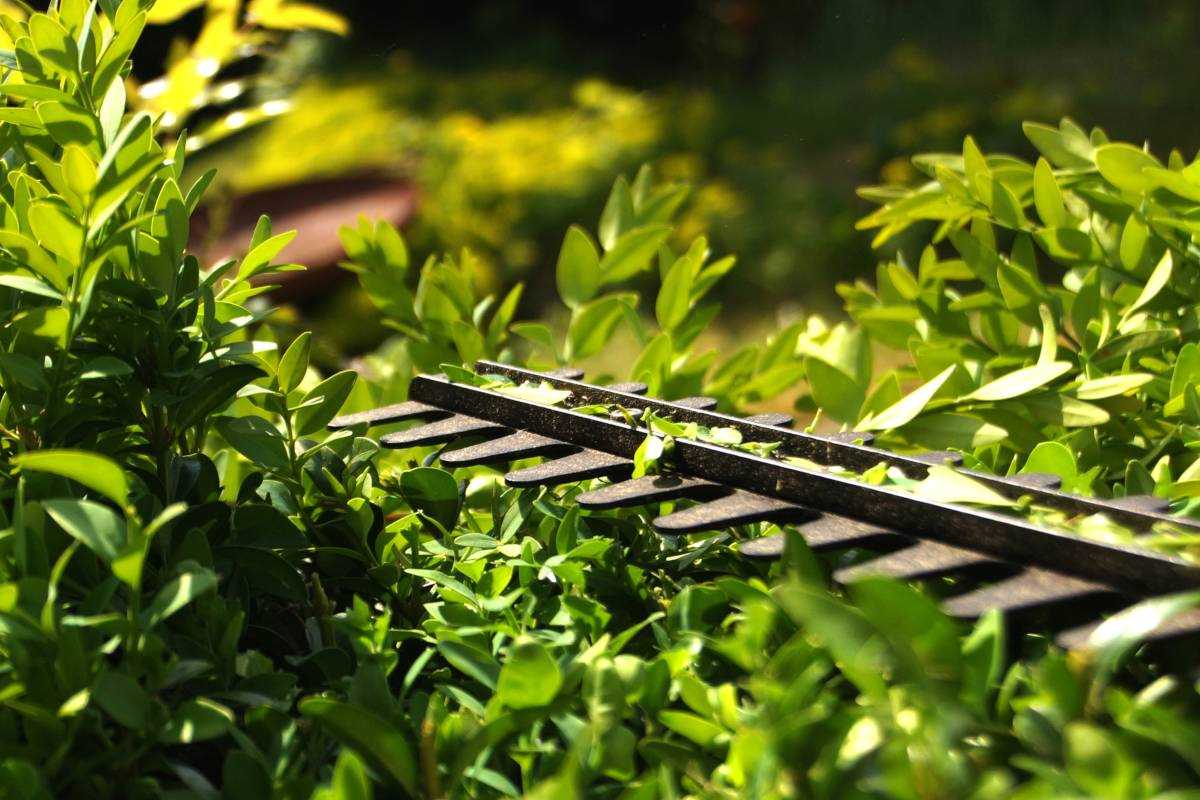
If you have any tender plants that won’t survive the winter, such as tropical plants or delicate perennials, consider bringing them indoors or providing them with protective covers.
4. Mulch Your Flower Beds
Apply a layer of mulch around your flower beds to protect the roots of your plants from freezing temperatures. This will also help retain moisture in the soil.
5. Check and Repair Garden Structures
Inspect your garden structures, such as trellises, fences, and arbors, for any signs of damage. Repair or reinforce them as needed to prevent further damage during winter storms.
6. Maintain Proper Drainage
Clear any clogged gutters, downspouts, and drains to ensure proper water drainage during rain or snowfall. This will prevent water buildup and potential damage to your garden.
7. Protect Container Plants
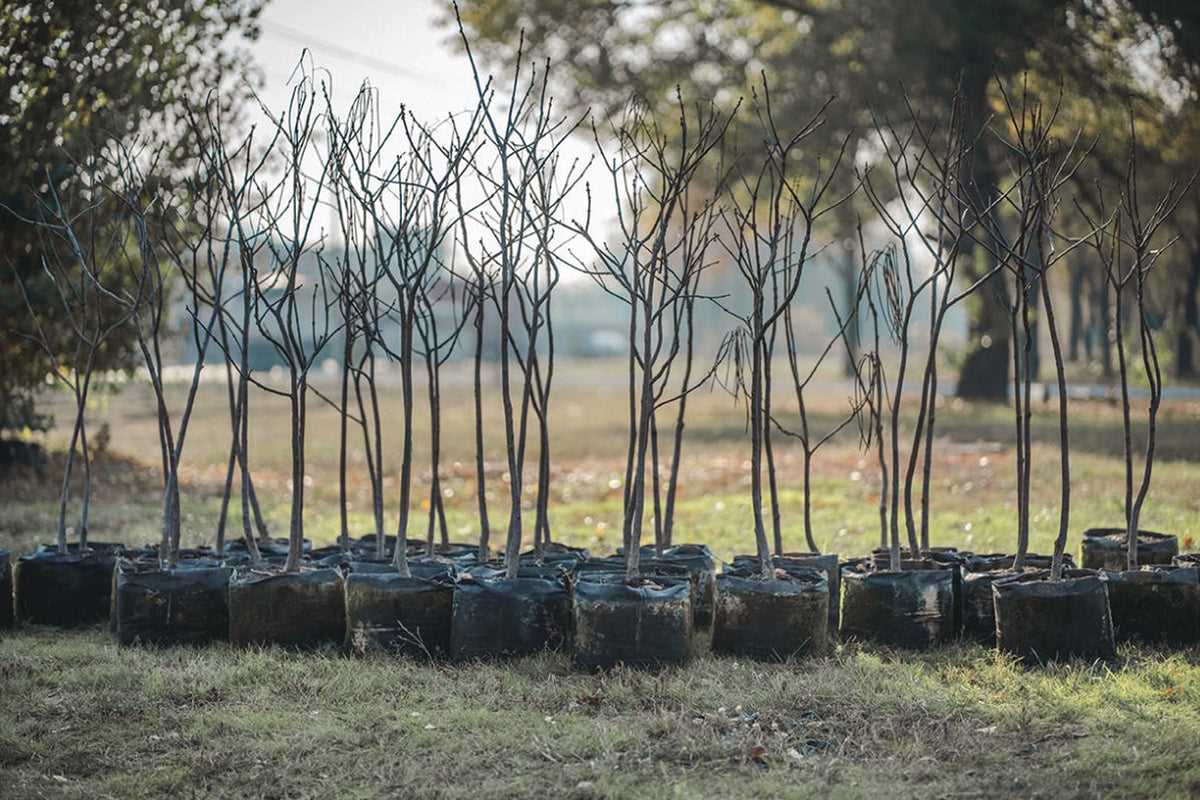
If you have plants in containers, consider moving them to a sheltered location, such as a garage or covered porch, to protect them from freezing temperatures.
8. Store Garden Equipment
Clean and store your garden tools and equipment in a dry place. This will help extend their lifespan and prevent rust or damage from exposure to winter weather.
9. Plan for Spring
Use this time to plan and prepare for the upcoming spring season. Consider researching and purchasing seeds or bulbs for planting in the spring.
By following these essential tips, you can ensure that your garden is well-prepared for winter and that your plants have the best chance of survival and thriving in the coming months.
Winterizing Your Shrubbery and Trees: Best Practices for November
1. Pruning
Before winter sets in, it is important to prune your shrubs and trees to remove any dead or diseased branches. This will not only help improve their overall health but also prevent any potential damage from heavy snow or ice. Use sharp pruning shears to make clean cuts, and remove any branches that are crossing or rubbing against each other.
2. Mulching
Adding a layer of mulch around the base of your shrubs and trees can help protect their roots from extreme cold temperatures. Apply a 2-3 inch layer of organic mulch, such as wood chips or shredded leaves, making sure to leave a space around the trunk to prevent moisture buildup and rot. Mulch will also help retain moisture and suppress weed growth during the winter months.
3. Wrapping
In areas with severe winter conditions, it may be necessary to wrap certain shrubs and trees to provide extra protection. Use burlap or other breathable fabric to wrap delicate branches, especially for evergreens and young trees. Start at the base and work your way up, securing the fabric with twine or zip ties. This will help prevent desiccation and damage from freezing temperatures and harsh winds.
4. Watering
Proper hydration is essential for shrubs and trees to survive the winter. Water your plants deeply before the ground freezes to ensure that their roots have enough moisture. However, be cautious not to overwater, as excess moisture can lead to root rot. Monitor the moisture levels throughout the winter and water only if necessary.
5. Pest Control
Take the opportunity in November to inspect your shrubs and trees for any signs of pests or diseases. If you notice any issues, consult with a professional or use appropriate treatments to eliminate the problem before winter. Pests can cause significant damage to weakened plants during the cold months.
6. Snow and Ice Management
When snow or ice accumulates on your shrubs or trees, gently remove it using a broom or your hand. Do not shake the branches as this can cause them to break. Removing the excess weight will prevent the branches from bending or snapping under the pressure. Take care not to damage the plants while clearing them.
7. Protecting against Wildlife
In some areas, wildlife can cause damage to shrubs and trees during the winter months. Use fencing or netting to create a barrier around vulnerable plants and trees to prevent rabbits, deer, or other animals from nibbling on them. Additionally, consider using repellents to deter wildlife from approaching your garden.
8. Monitoring and Maintenance
Throughout the winter, stay vigilant and monitor your shrubs and trees for any signs of damage or distress. Inspect the trunks, branches, and leaves regularly. If you notice any issues, take appropriate action immediately to ensure the health and survival of your plants. Regularly remove any fallen branches, debris, or snow buildup from the plants.
By following these best practices for winterizing your shrubs and trees in November, you can ensure their successful wintering and promote their overall health and longevity.
Mulching Techniques for Winter: Ensuring Cold-Weather Protection for Your Plants
Winter can be a challenging time for your plants, as they face low temperatures and harsh weather conditions. Mulching is an excellent technique to protect your plants during this period and ensure their successful wintering. Here are some mulching techniques that you can employ to provide cold-weather protection for your plants:
1. Choose the Right Mulch
When it comes to mulching for winter, selecting the right type of mulch is crucial. Organic mulch such as straw, wood chips, or leaves is ideal for retaining moisture, insulating the soil, and providing a buffer against extreme temperatures. Avoid using materials like rocks or gravel, as they don’t provide the same level of insulation.
2. Apply a Thick Layer
To effectively protect your plants from the cold, apply a thick layer of mulch. Aim for a depth of 2 to 4 inches, making sure to cover the entire root zone of the plant. This layer will act as a barrier, preventing the soil and roots from freezing and experiencing temperature extremes.
3. Extend the Mulch Beyond the Plant’s Drip Line
When mulching, it’s essential to extend the layer beyond the drip line of the plant. The drip line is the outer perimeter where water drips off the plant’s foliage. By extending the mulch beyond this point, you ensure that the entire root zone receives adequate protection.
4. Remove Weeds and Grass Before Mulching
Prior to mulching, clear the area of any weeds, grass, or other plants. These unwanted plants can rob your desired plants of moisture and nutrients. Removing them will allow your mulch to better insulate and nourish the plants you want to protect.
5. Avoid Mulching Too Early or Too Late
Timing is crucial when it comes to mulching for winter. Apply mulch before the ground freezes to ensure that the soil temperature remains consistent. Avoid mulching too early in the fall, as the warmth of the soil can encourage new growth. Also, don’t mulch too late, as the ground may already be frozen, making it difficult to apply the mulch effectively.
6. Don’t Pile Mulch Directly against Plant Stems
When applying mulch, make sure to avoid piling it directly against the stems of your plants. This can create a moist environment that can lead to rot or provide a hiding place for pests. Leave a small gap around the base of the plant to allow for proper airflow and prevent potential damage.
7. Monitor Moisture Levels
During the winter, it’s essential to monitor the moisture levels of your plants. While mulch helps retain moisture, it can also prevent rain or snow from reaching the soil. Make sure to water your plants regularly, especially if there is a prolonged period without precipitation.
8. Adjust Mulch Depth in Spring
Once winter is over and spring arrives, adjust the mulch depth around your plants. Remove excess mulch to prevent moisture retention and allow the soil to warm up more quickly. Leaving a thinner layer will also prevent potential issues like mold or fungus growth.
By employing these mulching techniques, you can provide your plants with the necessary cold-weather protection during the winter months. Remember to choose the right mulch, apply it correctly, and adjust it as needed throughout the season. Your plants will thank you with healthy growth come springtime!
Pruning in November: Maximizing Health and Growth for Your Bushes and Trees
Why prune in November?

Pruning your bushes and trees in November is essential for maximizing their health and growth. With the onset of winter, plants enter a dormant phase where their growth slows down significantly. This makes it an ideal time to prune as it minimizes stress on the plants and gives them a head start for the next growing season.
Benefits of pruning in November

- Promotes proper structure: Pruning in November helps shape the growth of your bushes and trees by removing unwanted branches and encouraging proper branching patterns. This promotes better structural integrity and prevents weak or crossing branches.
- Improves air circulation: Pruning removes dense foliage and overcrowded branches, allowing for better airflow through the plants. This reduces the risk of fungal diseases and increases overall plant health.
- Stimulates growth: By pruning in November, you stimulate new growth during the next growing season. This is because pruning encourages the production of hormones that promote bud development and increases flower and fruit production.
- Controls size: Regular pruning in November helps manage the size and shape of your bushes and trees. It prevents them from becoming too large or outgrowing their allotted space, making them easier to maintain and less prone to damage during winter storms.
Pruning techniques for November
When pruning in November, it is important to follow proper techniques to ensure the best results.
- Remove dead and diseased wood: Start by removing any dead, damaged, or diseased wood. This helps prevent the spread of diseases and improves the overall health of your plants.
- Thin out dense areas: Identify areas with dense foliage or overcrowded branches and selectively remove some of them. This promotes better air circulation and reduces the risk of fungal diseases.
- Shape the growth: Prune to shape the growth of your bushes and trees, removing any branches that are growing in undesirable directions or crossing each other. Aim for an open, well-structured plant.
- Prune for size control: If your bushes or trees are becoming too large, selectively prune to reduce their size. This can involve removing whole branches or shortening them to an appropriate length.
Pruning tools and maintenance
Ensure you have the necessary tools for pruning your bushes and trees. These may include pruning shears, loppers, and a pruning saw for larger branches. It is important to keep your tools clean and sharp to make clean cuts and prevent the spread of diseases.
Remember to dispose of pruned branches properly by either composting or disposing of them according to local regulations.
| Tool | Usage |
|---|---|
| Pruning shears | Ideal for cutting small branches and twigs |
| Loppers | Useful for cutting larger branches up to 2 inches in diameter |
| Pruning saw | Designed for cutting larger branches and thick wood |
By following these pruning techniques and using the right tools, you can maximize the health and growth of your bushes and trees during the winter months. Remember, November is the perfect time to prune, so don’t hesitate to get started!
Protecting Your Trees from Winter Pests: Effective Strategies for November
November is a crucial time to protect your trees from potential pest damage during the upcoming winter months. By implementing effective strategies in November, you can ensure the health and vitality of your trees, allowing them to thrive when spring arrives. Here are some tips to keep in mind:
Inspect for pests
Before the colder months set in, it is essential to inspect your trees for any signs of pests. Look for eggs, larvae, webs, or any other indicators that pests may be present. Common winter pests include aphids, scale insects, and spider mites. If you notice any signs of infestation, it is crucial to take action promptly.
Remove affected branches
Once you have identified pest-infested branches, it is necessary to prune them. Removing affected branches will help contain the pest population and prevent the spread of infestation to other areas of the tree. Make sure to dispose of the pruned branches properly to avoid spreading any pests.
Apply dormant oil spray
Applying a dormant oil spray in November can help suffocate and eliminate overwintering pests. The oil spray should be applied to the trunk, branches, and buds of the tree, thoroughly coating all surfaces. Make sure to follow the product instructions carefully, as dormant oil sprays can vary in their formulas and application methods.
Mulch around the base
Adding a layer of mulch around the base of your trees can provide insulation and protection against extreme cold temperatures. The mulch will help regulate soil temperature and retain moisture, reducing stress on the tree during the winter months. Additionally, mulch can discourage pests from overwintering near the tree’s base.
Monitor for signs of damage
Throughout the winter months, continue to monitor your trees for any signs of pest damage. Look for discoloration, wilting leaves, or abnormal growth patterns. Early detection of pest infestations can significantly increase the chances of successful treatment and tree recovery.
Consider professional help
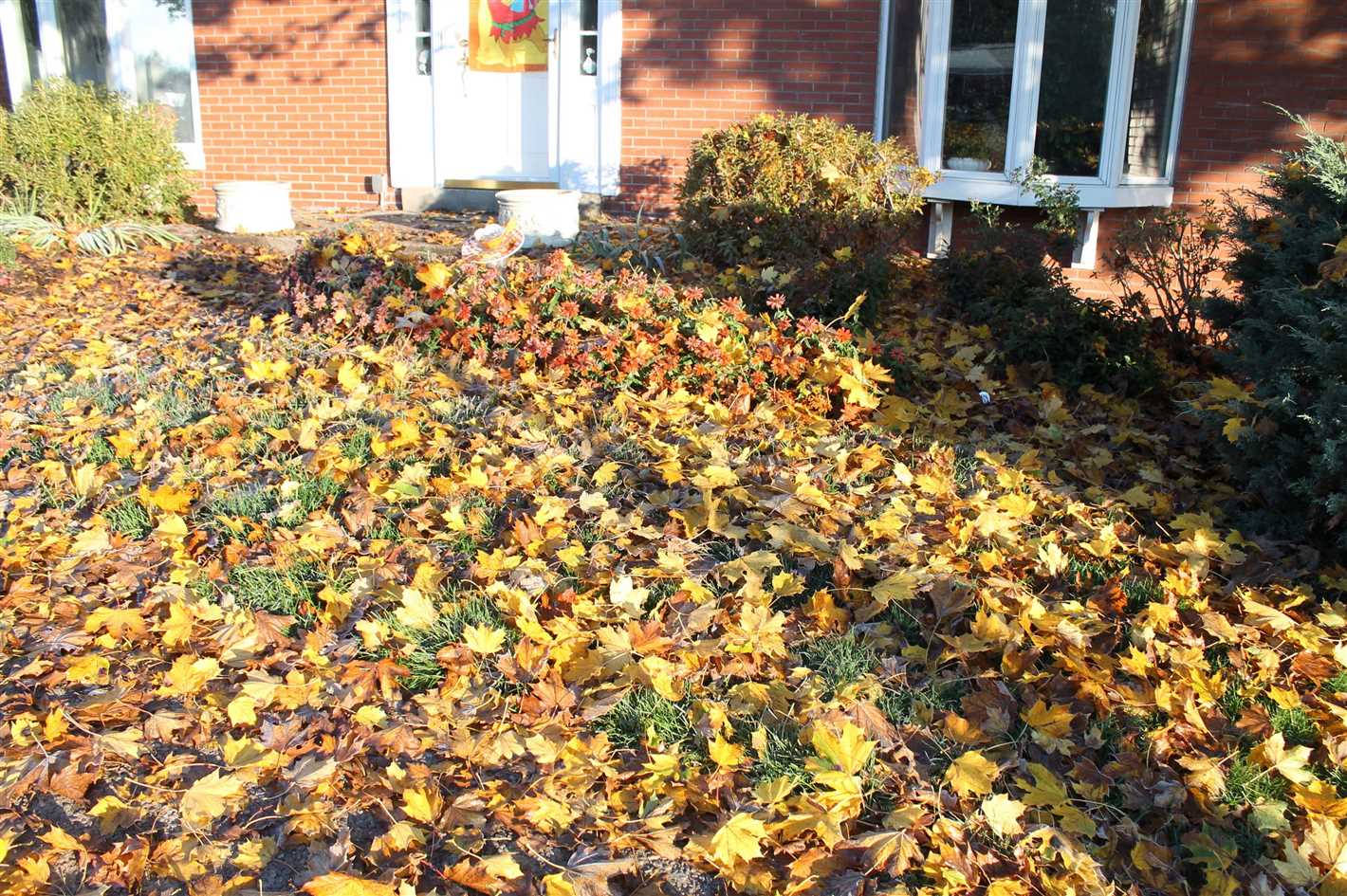
If you are unsure about identifying pests or implementing effective pest control strategies, it may be beneficial to seek professional help. Arborists or tree care specialists can provide expert advice, diagnose issues accurately, and recommend appropriate treatments for your specific tree species and pest problems.
By following these strategies in November, you can protect your trees from winter pests and ensure their overall health and vigor. Investing time and effort now will pay off when your trees burst into new growth during the spring season.
Watering Your Plants in November: Finding the Right Balance Before Winter
Proper watering is essential for the health and survival of your plants, especially as winter approaches. In November, it’s important to find the right balance between providing enough moisture to keep your plants healthy while avoiding overwatering that can lead to root rot. Follow these tips to ensure your plants are properly hydrated before winter.
1. Monitor Soil Moisture
Check the moisture level of your soil regularly to determine when watering is necessary. Use your finger or a moisture meter to test the soil’s moisture content. If the soil feels dry to the touch, it’s time to water. However, if the soil is still moist, wait a few more days before watering again.
2. Water Deeply
When you do water your plants, make sure to water deeply. Shallow watering encourages shallow root growth, which can be detrimental to the plant’s overall health. Aim to moisten the top 6-8 inches of soil, ensuring water reaches the plant’s root system.
3. Adjust for Temperature and Rainfall
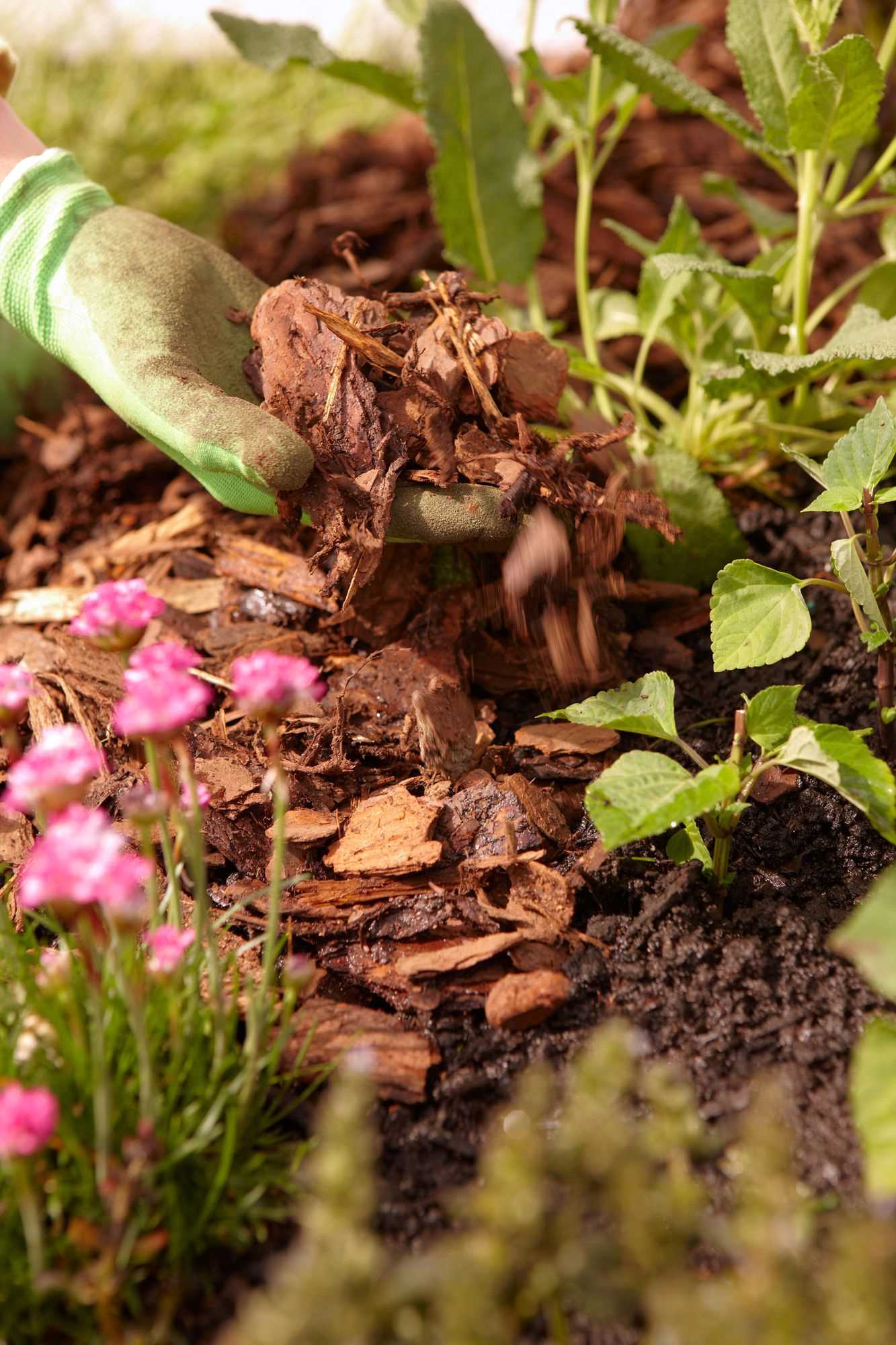
Take into account the temperature and rainfall in your area when determining your watering schedule. As temperatures drop, plants require less water. Additionally, if there has been significant rainfall, you may need to reduce watering or skip it altogether. Be mindful of these factors to avoid overwatering.
4. Mulch to Retain Moisture
Mulching around your plants can help retain moisture in the soil. Apply a layer of mulch, such as wood chips or straw, around the base of your plants to help prevent evaporation and maintain soil moisture levels. This can also provide insulation for the roots during winter.
5. Be Cautious with Container Plants
If you have plants in containers, be cautious with your watering routine. Containers tend to dry out quicker than plants in the ground. Check the soil moisture frequently and adjust your watering accordingly, ensuring the plants are hydrated but not sitting in waterlogged soil.
6. Reduce Frequency as Winter Approaches
As winter approaches and temperatures continue to drop, gradually reduce the frequency of watering. This will help prepare your plants for dormancy and prevent excessive moisture in the soil that can lead to freezing damage.
By finding the right balance of moisture in November, you can help ensure the successful wintering of your bushes and trees. Remember to monitor soil moisture, water deeply, adjust for temperature and rainfall, use mulch, be cautious with container plants, and reduce watering frequency as winter approaches. Following these tips will help keep your plants healthy and ready to thrive when spring arrives.
Winter Care for Fruit Trees: Ensuring a Bountiful Harvest Next Year
Winter is a crucial time for fruit trees, as it is when they enter a period of dormancy and prepare for the coming year. Proper winter care is essential to ensure a healthy and bountiful harvest next year. Here are some tips on how to care for your fruit trees during the winter months:
1. Pruning
Pruning is an important winter task for fruit trees. Remove any dead or damaged branches, as well as any weak or crossing branches. This will promote better air circulation and sunlight penetration, reducing the risk of diseases and improving fruit production.
2. Mulching
Applying a layer of mulch around the base of your fruit trees helps to insulate the soil and protect the roots from extreme temperatures. Use organic materials such as wood chips or straw, and apply a layer of about 2-4 inches thick. Be sure to keep the mulch a few inches away from the trunk to prevent rot.
3. Watering
While fruit trees are dormant during winter, they still require some moisture to survive. Monitor the soil moisture levels and water if necessary. Be careful not to overwater, as this can lead to root rot. Aim to keep the soil slightly moist, but not saturated.
4. Pest and Disease Control
Winter is a good time to inspect your fruit trees for any signs of pests or diseases. Remove any affected branches or fruit and dispose of them properly. Consider applying dormant oil sprays to control overwintering pests and prevent the spread of diseases.
5. Protection from Cold and Frost
In areas with freezing temperatures, it is important to protect your fruit trees from cold and frost. Consider covering them with burlap or frost blankets when a frost or freeze is expected. You can also create a windbreak using plastic sheeting or wooden barriers to shield the trees from harsh winds.
6. Monitoring
Throughout the winter, keep an eye on your fruit trees for any signs of stress or damage. Look for wilting or discoloration of leaves, as well as any pest or disease infestations. Address any issues promptly to ensure the health and productivity of your trees.
By providing proper care and protection during the winter months, you can ensure that your fruit trees remain healthy and ready to produce a bountiful harvest next year. Remember to tailor your care to the specific needs of your tree species, as different fruits may have unique requirements.
Monitoring Your Plants for Winter Damage: Identifying and Addressing Issues in November
As the winter months approach, it is important to keep a close eye on your plants to ensure their survival. The cold temperatures and harsh weather conditions can often cause damage to trees and bushes, so it’s essential to monitor their health and take action if necessary. In this guide, we will discuss how to identify and address common winter damage issues in November.
1. Inspect for Frost Damage
Frost damage can occur when the temperatures drop below freezing. Signs of frost damage include wilting, browning or blackening of leaves, and a mushy texture. Inspect your plants regularly for these symptoms, especially after a cold night.
2. Look for Wind Damage

Strong winds can cause branches to break or bend, leading to potential damage to the entire plant. Check for broken branches, split bark, or leaning trees. If you notice any of these signs, trim the damaged branches and provide support to prevent further damage.
3. Check for Snow and Ice Damage
Snow and ice can weigh down branches and cause them to break. Carefully inspect your plants after snow or ice storms for any signs of damage. Look for bent or cracked branches and remove any excess snow or ice to relieve the weight on the plant.
4. Monitor for Pest Infestations
Some pests are more active during the winter months and can cause damage to your plants. Keep an eye out for signs of pest infestations, such as chewed leaves, holes in the bark, or sticky residue. If you notice any signs of pests, take appropriate measures to control the infestation.
5. Provide Adequate Watering
Even though the weather may be cold, it’s important to ensure your plants receive adequate watering during the winter months. Inadequate moisture can cause stress to the plants and make them more susceptible to damage. Check the soil moisture regularly and water as needed.
6. Protect Plants from Extreme Temperatures
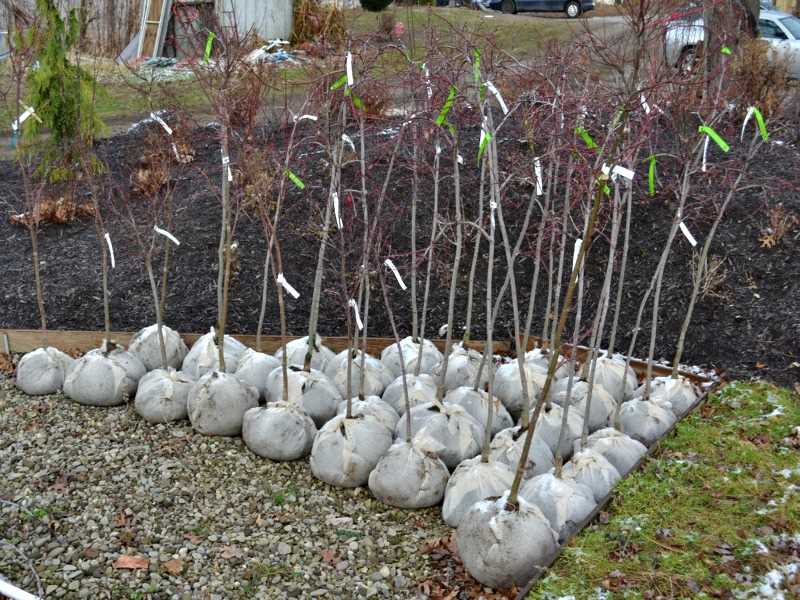
If your area experiences extremely low temperatures, consider providing additional protection to your plants. You can use mulch, burlap, or protective coverings to insulate the plants and shield them from the cold. Be sure to remove these coverings during warmer periods to prevent the plants from overheating.
7. Consult with a Professional
If you’re unsure about how to identify or address winter damage issues, it’s always a good idea to consult with a professional. An arborist or horticulturist can provide expert advice and guidance to help you protect your plants during the winter months.
By regularly monitoring your plants and taking appropriate action, you can ensure their successful wintering and promote their healthy growth in the spring. Don’t overlook the importance of caring for your plants during the colder months – it can make a significant difference in their overall health and longevity.
Question-answer:
What steps should I take to ensure successful wintering for my bushes and trees?
To ensure successful wintering for your bushes and trees, there are several steps you can take. First, make sure to water them well before the ground freezes. This will help to keep the roots hydrated throughout the winter. Second, apply a layer of mulch around the base of the plants to help insulate the soil and protect the roots from extreme temperatures. Third, prune any dead or damaged branches to promote healthy growth in the spring. Finally, consider wrapping sensitive plants with burlap or other protective material to shield them from harsh winter winds.
When is the best time to water my bushes and trees before winter?
The best time to water your bushes and trees before winter is when the ground is still soft and not frozen. Ideally, you should water them a few days before the first hard frost is expected. This will give the plants enough time to absorb the water and prepare for winter. Be sure to water them deeply, allowing the water to penetrate the soil and reach the roots.
What types of mulch should I use around my bushes and trees?
There are several types of mulch that you can use around your bushes and trees. Organic mulch, such as wood chips or bark, is a popular choice as it breaks down over time and adds nutrients to the soil. Another option is inorganic mulch, such as gravel or stones, which can help to retain moisture and prevent weed growth. Regardless of the type of mulch you choose, make sure to apply it in a layer about 2-4 inches thick around the base of the plants.
Should I prune my bushes and trees before winter?
Yes, it is a good idea to prune your bushes and trees before winter. Pruning can help to remove any dead or damaged branches, which can be more susceptible to breakage during winter storms. It also promotes healthy growth in the spring. However, avoid heavy pruning in the fall, as it can stimulate new growth that may not have time to harden off before the cold weather hits. Instead, focus on light pruning to maintain the shape and overall health of the plants.
What are some signs of winter damage on bushes and trees?
There are several signs of winter damage that you can look for on your bushes and trees. Some common signs include wilting or browning of the leaves, dead or damaged branches, and cracked or split bark. You may also notice signs of pest damage or disease, such as holes in the leaves or oozing sap. If you notice any of these signs, it is important to take action quickly to prevent further damage and promote the health and survival of your plants.
How can I protect sensitive plants from winter winds?
To protect sensitive plants from winter winds, you can wrap them with burlap or another protective material. Start by driving stakes into the ground around the plant, then wrap the burlap around the stakes, creating a barrier that will shield the plant from the wind. Avoid wrapping the burlap too tightly, as this can restrict airflow and lead to damage. It is also a good idea to place mulch around the base of the plant to help insulate the soil and protect the roots.
Is it necessary to fertilize my bushes and trees in November?
In general, it is not necessary to fertilize your bushes and trees in November. Most plants are entering a period of dormancy during this time, and their nutrient needs are minimal. However, if you notice signs of nutrient deficiency, such as yellowing leaves or stunted growth, you may consider applying a slow-release fertilizer. Be sure to follow the instructions on the fertilizer package and avoid over-fertilizing, as this can harm the plants.







